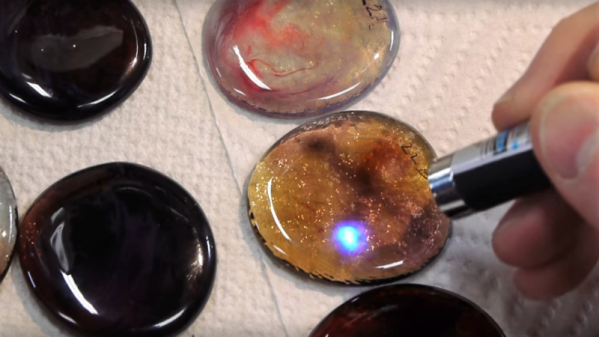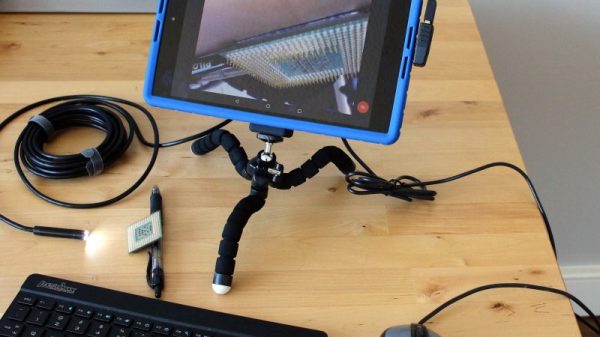Many of us will have casually eyed up the idea of turning a project into a product. Perhaps we’ve considered making a kit from it, or even taking it further into manufacture. But building a single device on the bench is an extremely different matter from having a run of the same devices built by someone else, and in doing so there are a host of pitfalls waiting for the unwary.
 [Erika Earl] is the Director of Hardware Engineering at Slate Digital, and has a lengthy background in the professional audio industry. Her job involves working with her team to bring high-quality electronic products to market that do not have the vast production runs of a major consumer electronic brand, so she has a lot of experience when it comes to turning a hacked-together prototype into a polished final device. Her talk at the 2017 Hackaday Superconference: Manufacturing Hacks: Mistakes Will Move You Forward examined what it takes to go through this process, and brought her special insights on the matter to a Hackaday audience.
[Erika Earl] is the Director of Hardware Engineering at Slate Digital, and has a lengthy background in the professional audio industry. Her job involves working with her team to bring high-quality electronic products to market that do not have the vast production runs of a major consumer electronic brand, so she has a lot of experience when it comes to turning a hacked-together prototype into a polished final device. Her talk at the 2017 Hackaday Superconference: Manufacturing Hacks: Mistakes Will Move You Forward examined what it takes to go through this process, and brought her special insights on the matter to a Hackaday audience.
She started her talk by looking at design for manufacture, how while coming up with prototypes is easy, the most successful products are those that have had the ability to manufacture as a consideration from the start of the design process. Starting with the selection of components, carrying through to the prototype stage, and through design reviews before manufacture, everything must be seen through the lens of anyone, anywhere, being able to build it.
At the selection of components for the Bill of Materials level, she made the point that high quality certified components can be the key to a product’s success or failure, contributing not only to reliability but also to it achieving certification. In her particular field, she often deals with components that can be close enough to the cutting edge to be prototypes in their own right. She mentioned the certification angle in particular in the context of exporting a product, as in that case there is often a need to be able to prove that all components used to meet a particular specification.
When it comes to the prototype stage, she made the point that documentation is the key. Coming back to the earlier sentence about anyone anywhere being able to build the product, that can only be achieved if all possible stages of manufacture are defined. She mentioned an example of a product in which the prototypes had had PCB fixing screws tightened by hand; when the factory started using electric screwdrivers the result was damaged PCBs and broken tracks.
The design review should look at everything learned through the prototype stage, and examine everything supplied to the manufacturer to allow them to complete their work. She describes finding support documentation containing a poorly hand-drawn schematic, and seeing an electronic assembly in which a piece of gum had been used to secure something. She also made the point that another function at this point is to ensure that the product is affordable to produce. If any parts or procedures are likely to cost too much, they should be re-examined.
After the talk itself as described above there is a Q&A session where she reveals how persistent and cheeky she sometimes has to be to secure sample parts as a small-scale manufacturer and delivers some insights into persuading a manufacturer to produce prototypes at a sensible price. And yes, like most people who have tried their hand at this, she’s had the nightmare of entire runs of prototype boards returned with a component fitted incorrectly.
The talk is embedded in its entirety below the break, and represents an extremely interesting watch for anyone starting on the road to manufacturing, particularly in the electronic world. If this describes you, take a look!
Continue reading “Erika Earl: Manufacturing Hacks” →





 [Erika Earl] is the Director of Hardware Engineering at Slate Digital, and has a lengthy background in the professional audio industry. Her job involves working with her team to bring high-quality electronic products to market that do not have the vast production runs of a major consumer electronic brand, so she has a lot of experience when it comes to turning a hacked-together prototype into a polished final device. Her talk at the 2017 Hackaday Superconference: Manufacturing Hacks: Mistakes Will Move You Forward examined what it takes to go through this process, and brought her special insights on the matter to a Hackaday audience.
[Erika Earl] is the Director of Hardware Engineering at Slate Digital, and has a lengthy background in the professional audio industry. Her job involves working with her team to bring high-quality electronic products to market that do not have the vast production runs of a major consumer electronic brand, so she has a lot of experience when it comes to turning a hacked-together prototype into a polished final device. Her talk at the 2017 Hackaday Superconference: Manufacturing Hacks: Mistakes Will Move You Forward examined what it takes to go through this process, and brought her special insights on the matter to a Hackaday audience.











